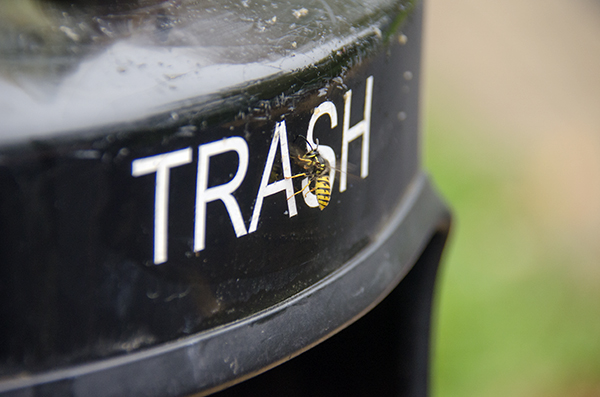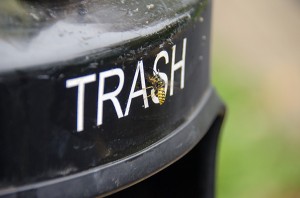
Have you heard the latest buzz on campus?
Mike Eiger has.
On a hot, sunny Thursday afternoon earlier last month, Eiger, a fourth-year communication disorders major, was doing his normal job.
As Day Programming Director for the campus radio station WFNP, Eiger was tasked with helping attract interested listeners to join their ranks at the annual Club and Involvement Fair outside of the Student Union.
In the midst of his recruitment speech, a swarm of yellow jackets surrounded him. As his friends began to swat the air around him, Eiger, who is allergic to stings, froze in fear.
One bee had flown straight onto his lips.
“I’ve never had a bee problem on campus until this semester,” Eiger said. “I’m glad I live off-campus now, that’s for sure.”
Eiger isn’t alone, as students across SUNY New Paltz have reported seeing an inordinate and unusual amount of stinger-laden insects buzzing across campus.
Faiqa Amreen, a third-year secondary education major, said the yellow jackets on campus have been of particular concern for her this semester – so much so that she has had to find new routes to her classes each day to avoid being stung.
“I’m terrified,” Amreen said. “I walk with friends saying ‘shield me’ or ‘block me!’”
Amreen said she believes the highest density of yellow jackets have clustered near the Humanities building and Excelsior Concourse, which means she needs to find other ways to get from her dorm room in Bouton Hall to her classes each day.
For students with allergies like her, Amreen said the college needs to address this problem.
“I will die if I go into shock,” Amreen said. “I have to go to the Health Center to get my medicine and if I was stung outside of Humanities I would pass out before I got past the Lecture Center.”
Director of Environmental Health and Safety Mike Malloy said he believes the yellow jackets are attracted to the sweet substances like apple cores or soda bottles that are thrown away in garbage cans, but if students such as Eiger and Amreen believe there is an unusual amount of yellow jackets in a particular area of campus, they should alert college officials.
“If students see something, they should say something,” Malloy said. “If they see a hive or particular place on campus, they need to call facilities. If facilities doesn’t know about it — they’re not clairvoyant — they can’t do anything about it.”
Malloy said SUNY New Paltz would try to steer away from using pesticides to kill any of the buzzing insects, but simple steps taken by students might reduce the possibility of being stung.
“If students were a little more environmentally conscious and say put a cap on the plastic soda bottles into the recycling bins that have more closed openings…that could keep the bees out of the trash,” Malloy said.
Throwing out food waste at sites where composting is available on campus and reducing other “syrupy substances” in the trash cans around the college would also reduce the number of yellow jackets attracted to spots on campus, Malloy said.
“It would take some effort, but it would reduce the attractiveness of [the garbage bins],” Malloy said.
Amreen said she isn’t exactly sure how SUNY New Paltz can reduce the number of yellow jackets across campus, but hopes they take the concerns of students like her seriously.
“I do think they have an obligation,” Amreen said. “I just feel like if you can get rid of the geese and that is such an issue, I think bees are just as much of an issue. The geese weren’t going to kill anyone.”
—–
* An earlier version of this article failed to make a distinction between yellow jacket wasps and honey bees.
